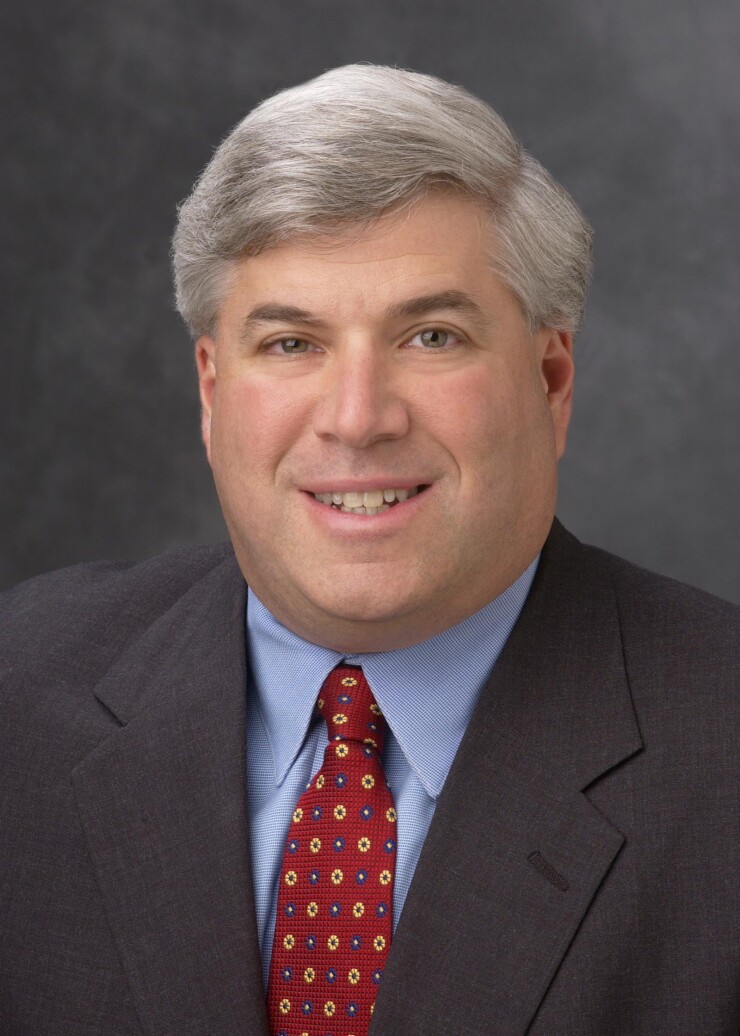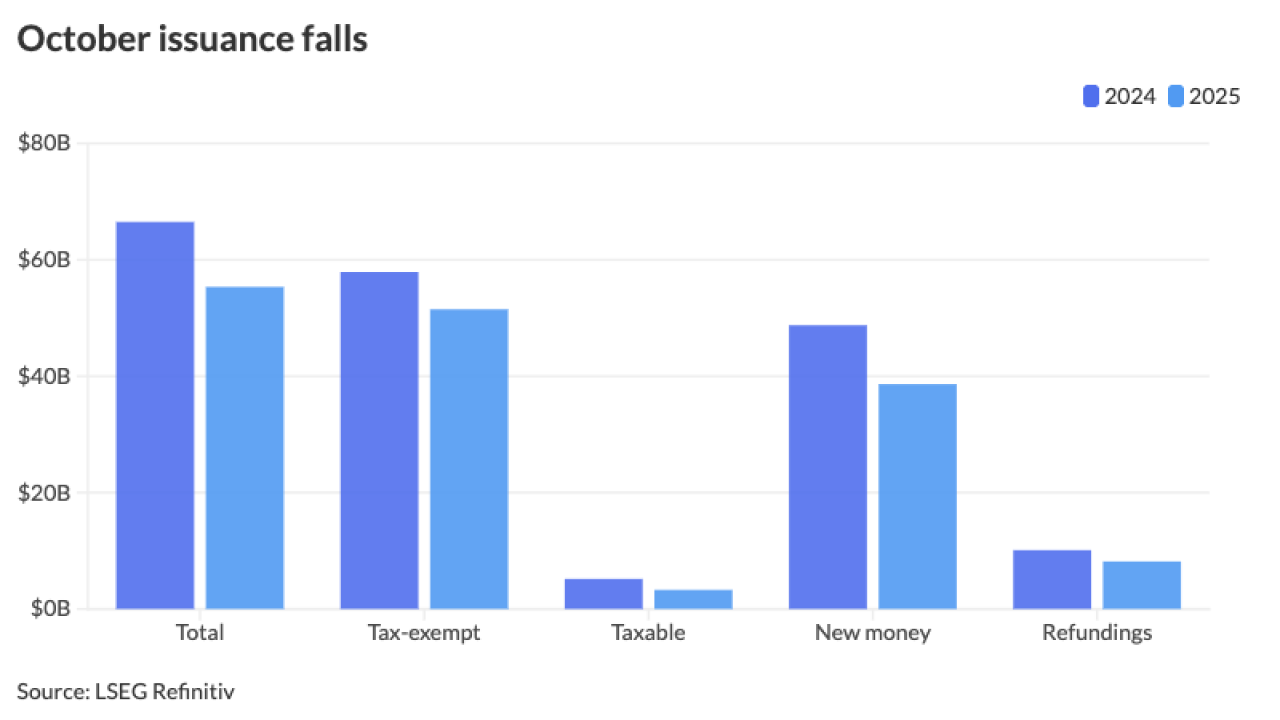Alabama is testing the water to determine if a public-private partnership is the right model to build three new prisons, a move that a P3 expert says some issuers use even if they later decide to change course.
Five companies have responded to the state’s request for “

While the procurement process is in its infancy, ultimately the state wants to construct more than 10,000 beds for male prisoners in state-of-the-art facilities to relieve severe overcrowding and other inequities.
Alabama's current plan is to get detailed proposals from qualified developers interested in buying the land, financing, building, and maintaining three turnkey build-to-suit prisons that would be leased to the Alabama Department of Corrections, according to the state’s proposal requesting expressions of interest from firms. ADOC will operate the facilities, and employ the staff.
However, the state may later decide to build and finance the prisons differently.
“All options are currently on the table,” said Lori Jhons, spokeswoman for Gov. Kay Ivey, who is spearheading the prison construction project.
Some government agencies use a P3 procurement first to review all options for building a major project, said Larry Belinsky, a managing director who leads the P3 practice at the independent municipal financial advisory firm Frasca & Associates LLC.
“I think it’s smart for the government to look at the alternatives and to be able to tap into the private sector for innovation and possibly find ways to drive down costs of the program because of the innovation,” said Belinsky, who wasn’t familiar with Alabama’s proposal until he was asked to review it by The Bond Buyer.
The state also may be trying to gauge interest from the private sector, he said.
The projected cost for building the three men’s correctional facilities is $900 million based on current market estimates, said ADOC spokesman Bob Horton.
Ivey said Alabama has systemic issues within its aging prison system that must be resolved, especially in light of an April 2
The DOJ attorneys said they believe conditions in Alabama's prisons violate the Eighth Amendment to the Constitution prohibiting “cruel and unusual punishments.”
“We have reasonable cause to believe that Alabama routinely violates the constitutional rights of prisoners housed in the Alabama's prisons by failing to protect them from prisoner-on-prisoner violence and prisoner-on-prisoner sexual abuse, and by failing to provide safe conditions,” said the letter signed by Assistant Attorney General Eric S. Dreiband, and U.S. attorneys Louis V. Franklin, Jay E. Town, and Richard W. Moore.
The violations are exacerbated by serious deficiencies in staffing, supervision and overcrowding, their letter said.
According to a 56-page report accompanying the letter, Alabama has one of the most overcrowded prison systems in the nation with a system-wide occupancy rate of 165%. The state's major correctional facilities house about 16,300 prisoners, but the system was designed to hold 9,882, the report said.
The USDOJ attorneys said they would advise the state in 49 days if they would file a lawsuit under the Civil Rights of lnstitutionalized Persons Act of 1997 “to correct the alleged conditions.”
Ivey, a Republican, won her first full term as governor in the November midterm election. She ascended to the governor’s office in April 2017 after Gov. Robert Bentley pleaded guilty to misdemeanor charges and resigned from office, rather than face impeachment proceedings.
Ivey inherited problems with the state’s aging lockups from prior administrations. State lawmakers were also reluctant to fund the costly facilities.
In 2014, the Southern Poverty Law Center and the Alabama Disabilities Advocacy Program filed a class-action lawsuit against the ADOC, the agency's Commissioner Jefferson S. Dunn, MHM Correctional Services Inc., and Corizon Health Inc., contending that the poor level of mental health care provided to prisoners violated the Eighth Amendment.
On May 4, U.S. District Judge Myron Thompson ruled in the case that the Alabama prison system failed to prevent inmate suicides and ordered the ADOC to take steps to address “severe and systemic inadequacies.” The suit is ongoing.
In 2016, Bentley proposed a traditional design-build plan to construct four large, state-of-the-art regional correctional facilities to replace 14 high- and medium-level prisons. At that time, the facilities were an average age of 40 years old.
Under Bentley's plan, the state would issue $800 million of bonds to finance the project. But it failed to gain traction in the state Legislature.
Jhons told The Bond Buyer that Ivey and other state leaders are committed to resolving “the complicated, decades-old challenges facing our prison system.”
On April 18, Ivey announced that five firms had answered the state’s request for “expression of interest” in building three prisons.
The responding companies are CoreCivic, Corrections Consultants LLC, Plenary, Provident Resources Group, and Star America.
“I’m very pleased with the interest expressed so far, and we’re only at the preliminary stage in the process,” Ivey said in April. “While working closely alongside ADOC, I’m fully committed to propelling this plan forward to not only eradicate these systemic issues, but also keeping the deciding power in Alabama, not at the will of the federal courts. This is an Alabama problem that must have an Alabama solution.”
The proposal seeking initial expressions of interest says the state is interested in having companies build facilities with a 50-year design life on land owned, leased or to be acquired by the developer, which would receive an availability payment under a taxable or tax-exempt lease structure.
The developer or developers for all three prisons would receive a cumulative annual lease amount of approximately $78 million, the proposal said. It also contains information about site locations being near population centers.
ADOC's consultants on the project are the Birmingham-based construction company HPM and CGL, a firm with expertise in criminal justice facility planning. Alabama said it expects to release a request for qualifications by the end of June, and a request for proposals in the third quarter of this year. The state will then make a final decision about how the projects will be financed and built.
“I would think [Alabama is] following a process many governmental entities follow, which is to look at all the delivery methods and determine which delivery method meets their goals and objectives,” said Frasca’s Belinsky.
The state has given prospective developers the general parameters concerning the project.
“Once they determine there is interest from multiple teams for the development then they can start to look at the value-for-money analysis to determine the best delivery method,” he said.
While governmental issuers can always borrow at cheaper rates, Belinsky said, the private sector’s ability to be innovative with designing, building and maintaining structures could get the projects completed faster and at less cost.

Alabama isn’t alone in using a P3 to determine the best option for building a major project.
Virginia conducted a similar exercise before signing financial and comprehensive construction agreements to advance the $3.8 billion Hampton Roads Bridge-Tunnel expansion project, the state’s largest-ever transportation project.
Procurement for the project began as a P3 even though it was always contemplated to be done as a design-build project, because Virginia’s P3 law provides state officials with more latitude and efficiency to negotiate such deals, a state official familiar with the process said.
In April, Gov. Ralph Northam said parties involved with the project completed the necessary documents to begin work widening a 12-mile stretch of Interstate 64 between Hampton and Norfolk, and adding two new subsea tunnels to the Hampton Roads Bridge-Tunnel.
The Dragados USA-led Hampton Roads Connector Partners will design and build the project for a fixed price of $3.3 billion.
The Hampton Roads Transportation Accountability Commission, a regional public financing authority whose revenues come from gas taxes and other fees, will pay $3.56 billion of the cost, using debt and cash.
Another $345 million is expected to come from toll revenue bonds and the Virginia Department of Transportation will contribute the remainder of the cost.
A CoreCivic P3 prison construction project in Kansas





